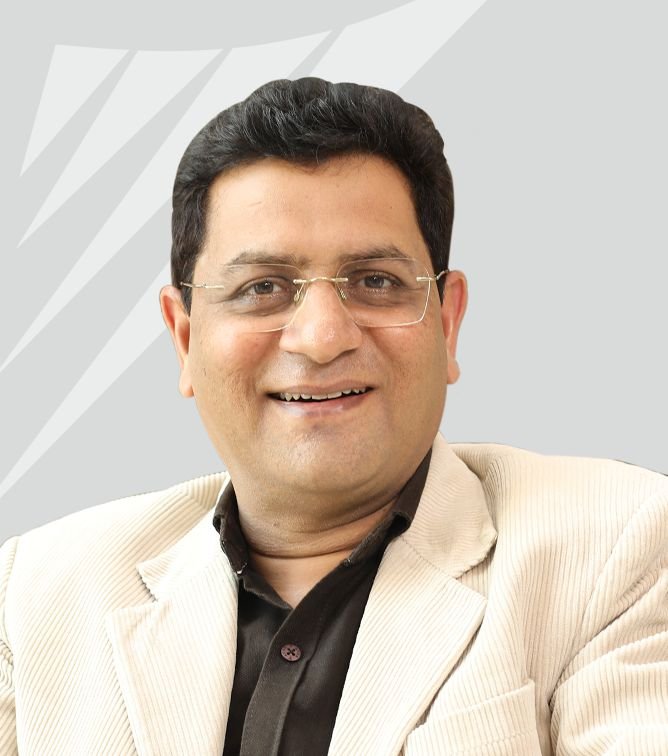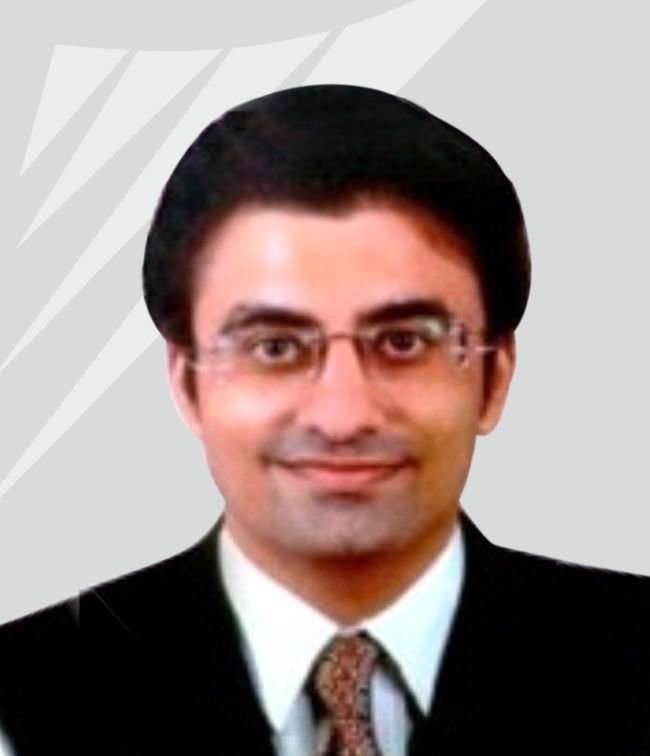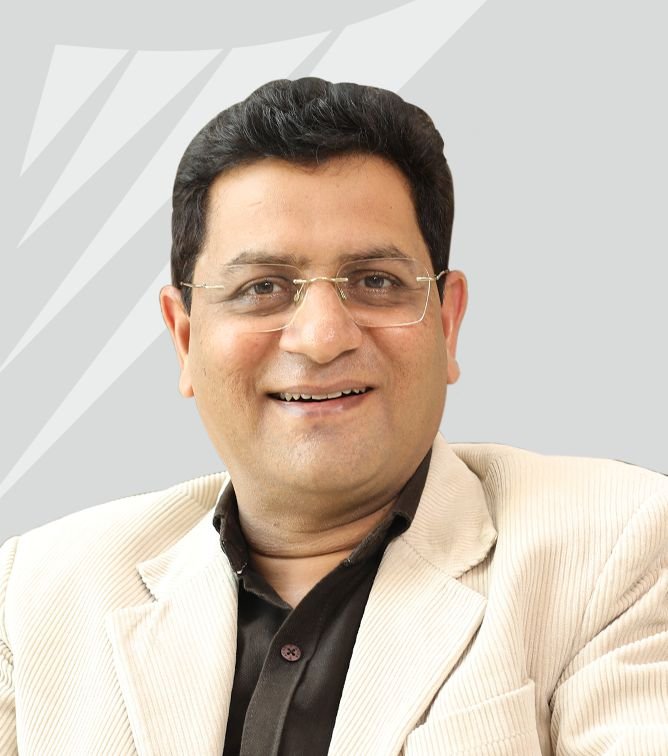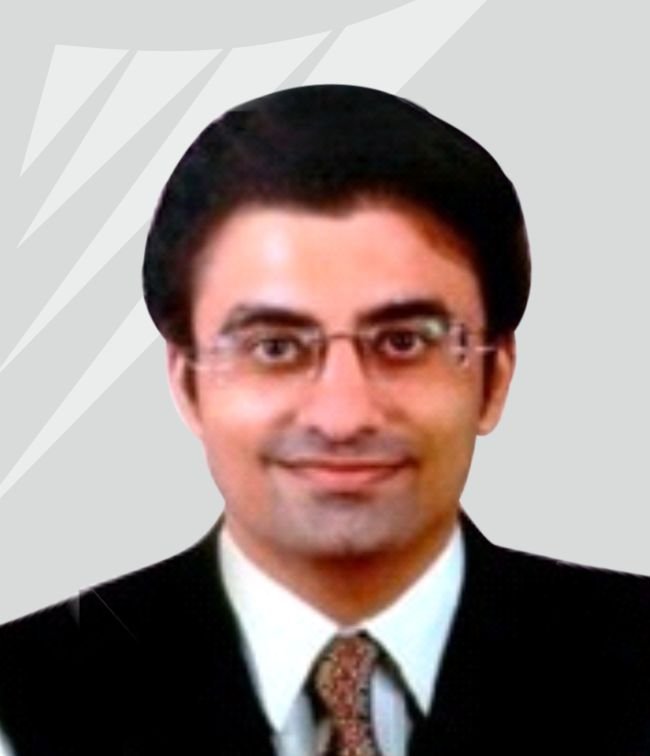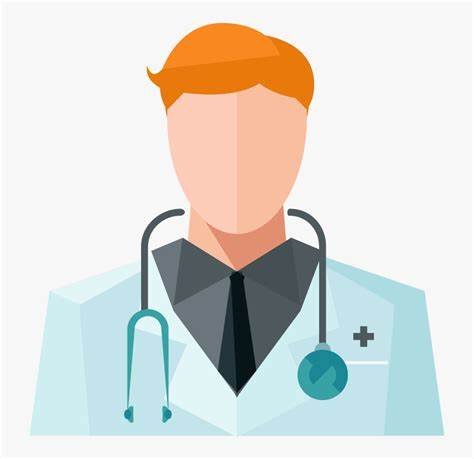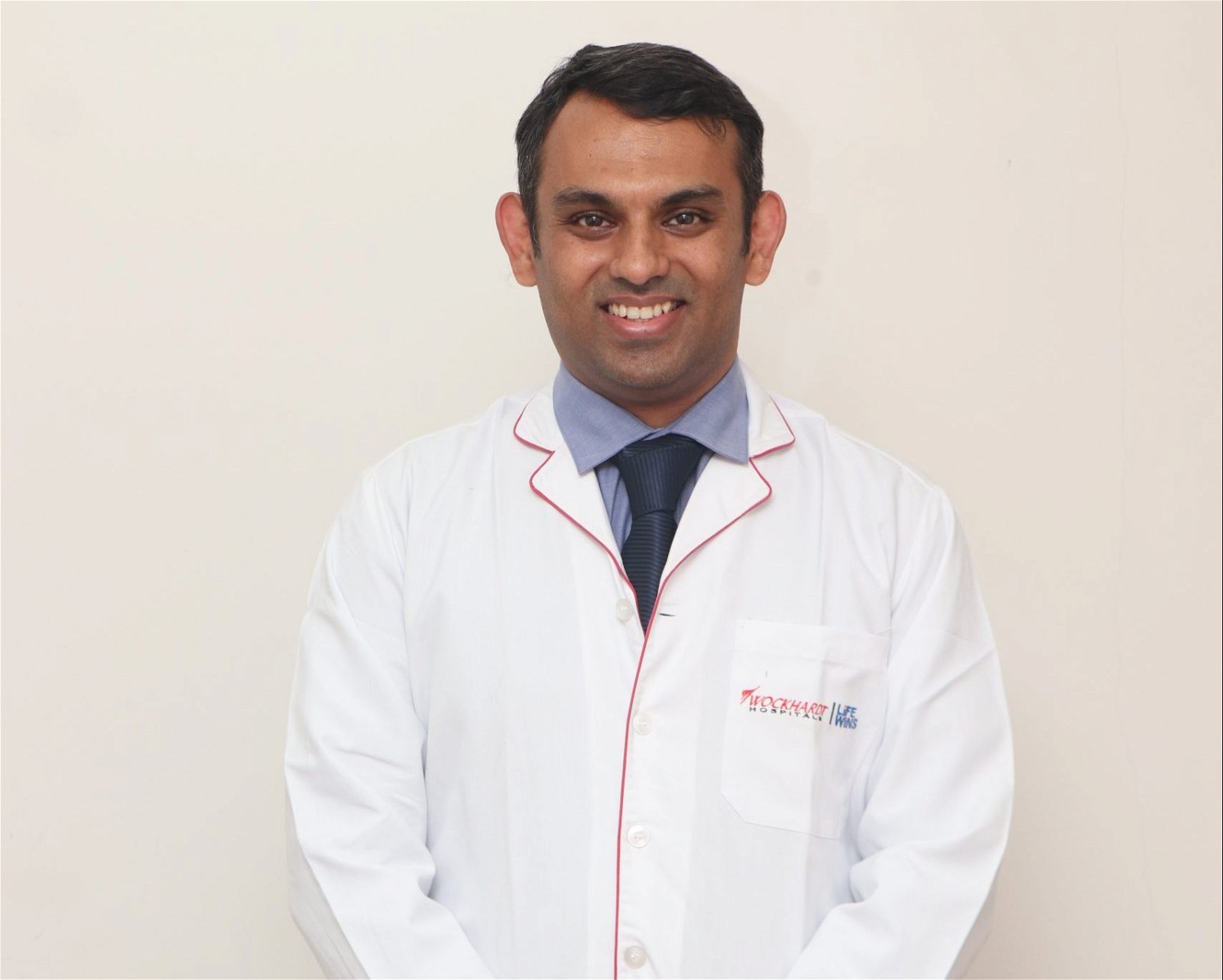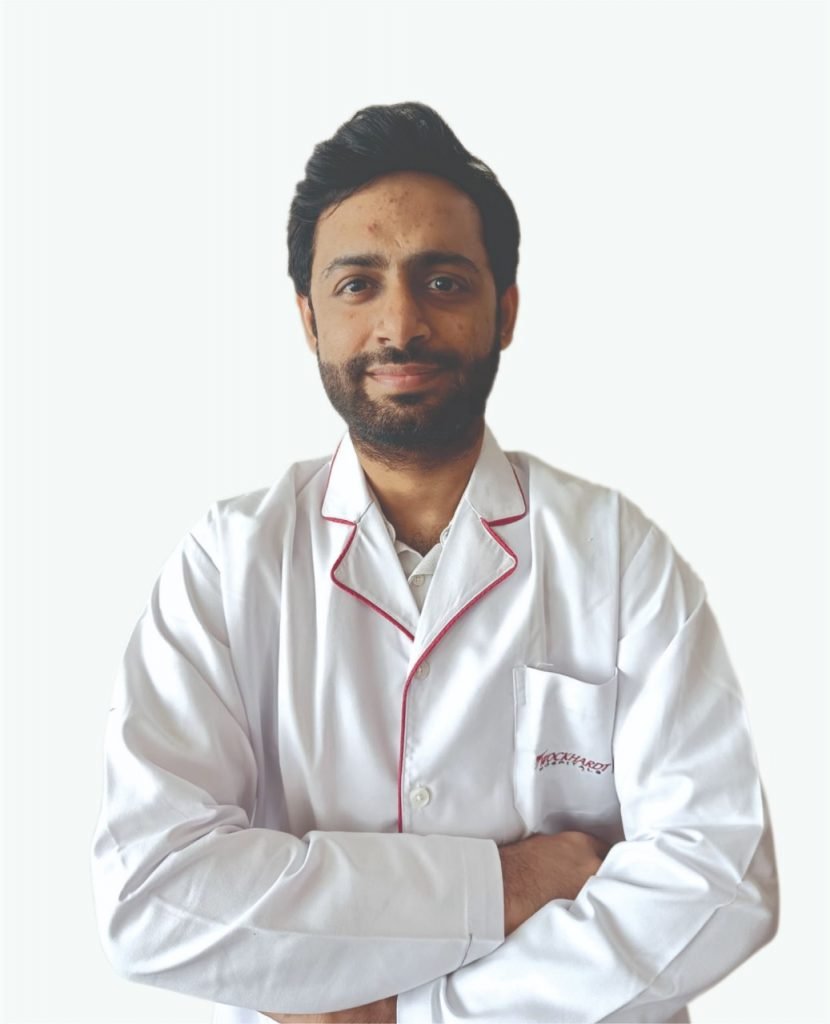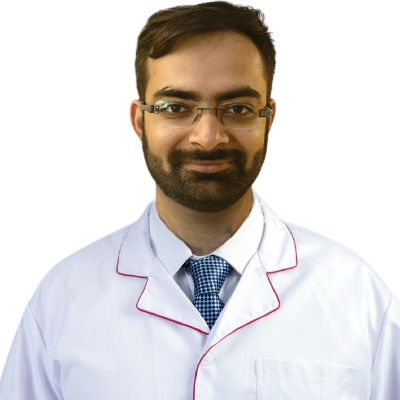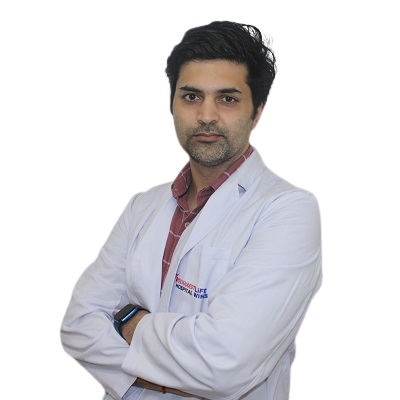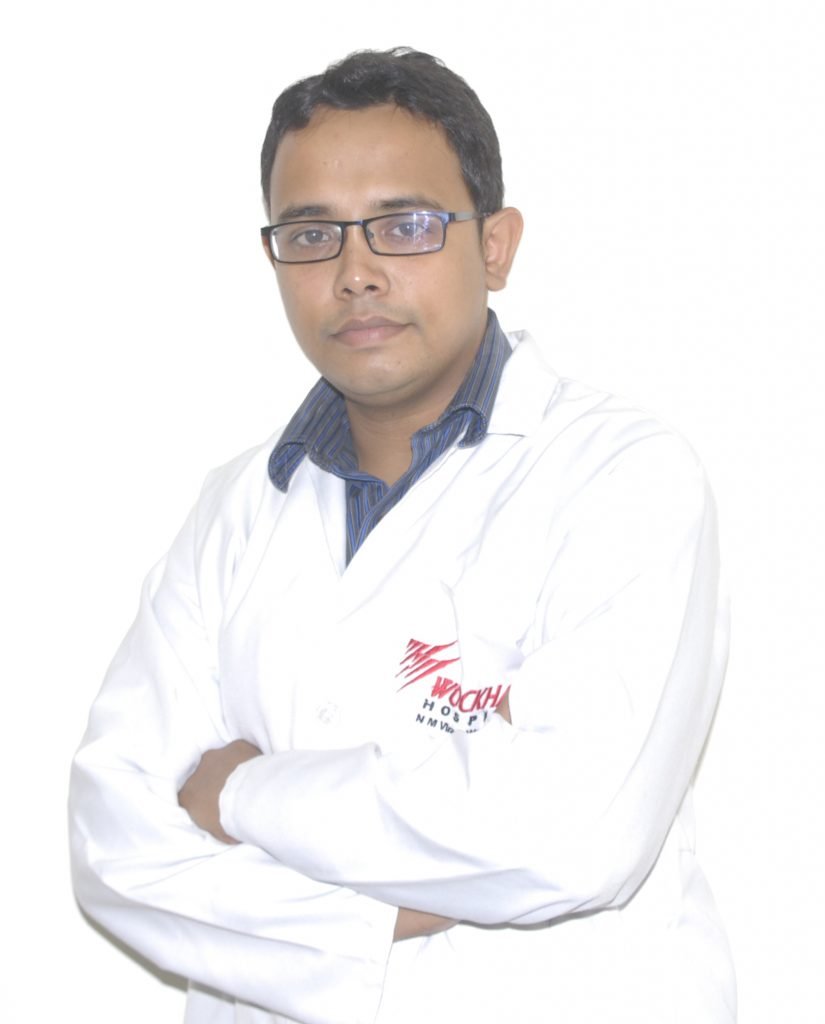Home » Medical Procedure » Deep Vein Thrombosis DVT
DVT Treatment:
Deep Vein Thrombosis Treatment in India
At Wockhardt Hospitals, our experienced vascular experts utilize cutting-edge diagnostic tools and techniques for DVT treatment.
What is DVT (Deep Vein Thrombosis)?
Deep Vein Thrombosis happens when blood clots in one or more deep veins of our body. Though common in the lower legs, pelvis, or thighs, DVT can occur anywhere in the body. It can cause swelling or pain, and sometimes you will not see any symptoms. Getting the condition checked and treated at the earliest is important, or it might lead to severe health complications.
This medical condition can get more severe as the blood clot in the vein might break loose and travel through the bloodstream. While traveling through the blood, it might get stuck in the lungs, blocking the blood flow and causing a fatal situation.
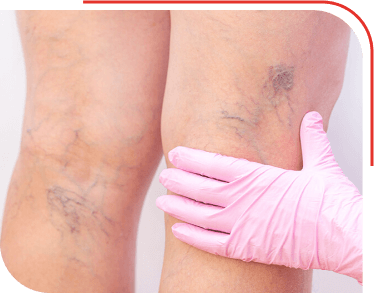
Renowned Deep Vein Thrombosis
Treatment Surgeons at Wockhardt Hospitals
- Mumbai Central
- Mira Road
- Nagpur
- Rajkot
What are the Major Causes of DVT (Deep Vein Thrombosis)?
Anything that prevents blood from flowing without any constraint is known as a blood clot. The following are the risk factors of Deep Vein Thrombosis:
- Age: DVT can occur at any age, but people over 60 are more at risk.
- Lack of Movement: Muscle contractions lead to smooth blood flow. When any part of the muscle in your body does not move for a very long time, DVT can occur.
- Injury or Surgery: Injuries to the vein or undergoing any surgery often increase the risk of blood clots.
- Pregnancy: Because pregnancy puts strain on the veins in the pelvis and legs, it increases the risk of blood clots.
- Birth Control Pills: Pills that avoid pregnancy increase the ability of the blood to clot.
- Being Overweight: Obesity causes the muscles in the legs and pelvis to grow, which causes blood clots.
- Smoking: Smoking causes the blood to clot, increasing the risk of DVT.
- Cancer: Some malignancies secrete chemical which increase the blood clotting. Moreover, some cancer therapy options also increase blood clotting risk.
- Heart Failure: The risk of DVT and Pulmonary Embolism increases with heart failure. People with heart failure have impaired heart and lung function, making even a tiny pulmonary embolism more noticeable.
- Inflammatory Bowel Disease: Crohn's Disease or Ulcerative Colitis increases the risk of DVT.
- Family History of DVT: If someone in your family has DVT, you might also get the condition.
- Genetic: Some people have DNA changes that cause the blood to clot more easily.
What are the Symptoms of DVT (Deep Vein Thrombosis)?
Many people aren’t even aware if they are suffering from deep vein thrombosis, as there are no noticeable symptoms. At times, these symptoms are very mild and may not raise concerns. A few symptoms associated with DVT:
- Swelling in arms and legs.
- Abdominal pain or flank pain
- Discolored or red skin
- Swollen areas on your body might be warmer than usual
- Pain or tenderness in your arm and leg
- The larger appearance of veins
- Severe headaches or seizures
How is Deep Vein Thrombosis Diagnosed?
The doctor will perform a thorough physical examination during the consultation and ask questions about your medical condition. It is important to consider and answer those questions correctly. DVT diagnosis consists of the following tests:
- D-Dimer Blood Test: Blood clots create a particular kind of protein called D dimer. The blood levels of D dimer are elevated in nearly all patients with severe DVT.
- Doppler Ultrasonography: In this noninvasive examination, sound waves visualize the veins' blood flow. It is the accepted method of identifying DVT. A small hand-held instrument (transducer) is softly moved over the body area examined during the test by a healthcare professional. Over several days, more ultrasounds may be performed to look for new blood clots or to see whether an existing one is expanding.
- Venography: This examination produces an image of the veins in the legs and feet using X-rays and dye. A big vein in the foot or ankle receives the dye injection, which will help in getting a clear image. On X-rays, it makes blood vessels more visible. The procedure is uncommon since it is invasive.
- Contrast CT: Deep vein thrombosis in abdominal veins can be identified using CT contrast imaging test.
What are Deep Vein Thrombosis Treatments?
If you are exhibiting DVT symptoms, call the doctor without delay, or reach out to the nearest emergency ward of the hospital. A medical expert can examine your symptoms and give a proper diagnosis based on your current condition and medical history. DVT treatment emphasizes preventing the clot from spreading. Additionally, deep vein thrombosis treatment may reduce your chance of developing additional clots and possibly prevent a pulmonary embolism.
-
Clotting Agents
These drugs are also known as anticoagulants. They aid in preventing blood clots from growing larger. Blood thinners lessen the chance of getting new clots. Blood thinners can be administered orally, intravenously, or subcutaneously. Deep vein thrombosis (DVT) is treated with a variety of blood-thinning medications. These may be required for three months or longer. To avoid major side effects, taking them exactly as directed is crucial. Regular blood tests are required for those who take the blood thinner to check the drug's levels in the body. Doctors do not recommend blood thinners if you are pregnant. -
Clot Busters
These are administered intravenously (IV) or through a catheter inserted right into the clot. They are typically only used for persons with significant blood clots since they can result in major bleeding. -
Filters
If you cannot take blood-thinning medications, a filter may be inserted into the vena cava, a big vein in your abdomen. A vena cava filter prevents loose blood clots from settling in the lungs. -
Compression Stockings (Support Stockings)
These unique knee socks aid in preventing blood accumulation in the legs. They also aid in lowering leg edema. Wear them on your legs, starting at the level of your knees. It is advisable to wear comfortable compression stockings for a few years, as it helps with deep vein thrombosis. -
Surgery
Your doctor can recommend surgery to remove a deep vein thrombosis clot from your arm or leg. Normally, surgery as deep vein thrombosis treatment is only advised in big blood clots or clots that pose major risks, like tissue injury. During a surgical thrombectomy or operation, your surgeon will cut into a blood vessel to remove a blood clot. They'll find the clot and get rid of it. The tissue and blood vessel will then be repaired.
They may also use a small inflated balloon. It keeps the blood vessel open while they remove the clot. The balloon is also removed when the clot is located and extracted.
What are the Risks & Complications of the Deep Vein Thrombosis Treatment?
Like all surgeries, surgery for DVT treatment also has risks. Thus, many medical professionals will only advise it in extreme circumstances. Some of the risks associated with DVT treatment:
- Infection
- Blood Vessel Injury
- Excessive Bleeding
How to Prevent DVT (Deep Vein Thrombosis)?
Many required modifications are included in a healthy lifestyle to stop blood clots from forming. This entails increasing physical activity, giving up smoking, and maintaining a healthy weight. You can prevent deep vein thrombosis by:
- Keep checking on your blood pressure.
- Quit smoking and keep a healthy weight.
- In order to reduce your risk of getting clots following surgery, take whatever blood thinners your doctor recommends.
- When you sit for longer than few hours, your chance of getting DVT increases. Moving your legs around will keep your blood circulating when you've been sitting for a while. Getting up and moving around after being confined to bed can stop clots from developing.
- During long travels, get out of the vehicle and take regular breaks to stretch. Move to the aisles if you're traveling by plane, train, or bus.
- While you are sitting, stretch your feet and legs. This maintains a steady flow of blood to your calves. Avoid wearing tight clothing that can impede blood flow.
DVT is a serious ailment that might cause death if not treated promptly. Since many people don’t exhibit symptoms, DVT diagnosis can be challenging. If you don’t have symptoms, you can even be more likely to develop complications that could be fatal. This is why it’s crucial to understand the risk factors and get to the best hospital, like Wockhardt Hospitals, for prompt treatment.
Trust us to give you the most comprehensive treatment for Deep Vein Thrombosis. Our medical professionals are highly experienced in treating and managing DVT with high success rates. For any other medical assistance, visit the nearest Wockhardt Hospital and talk to the medical counselors and concerned doctors.
FAQs on DVT (Deep Vein Thrombosis)
Q. What is anticoagulation therapy?
Anticoagulation therapy involves the use of blood-thinning medications, which prevent the formation of blood clots. These medications suppress the coagulation pathway, reducing the risk of thrombosis and complications, such as deep vein thrombosis (DVT) or atrial fibrillation.
Q. What is the role of exercise in DVT treatment?
Exercise plays a crucial role in the (DVT) deep vein thrombosis treatment by promoting blood circulation and preventing clot formation. Regular physical activity helps reduce risk factors associated with DVT, improves vascular health, and aids in overall recovery by preventing complications like post-thrombotic syndrome.
Q. What is the success rate of DVT treatment in India?
The success rate of (DVT) deep vein thrombosis treatment in India is generally high, especially when promptly diagnosed and treated. With advanced medical facilities, skilled healthcare professionals, and effective treatment options, many individuals with DVT in India experience successful outcomes and an improved quality of life.
Q. How does DVT treatment vary for different age groups?
(DVT) Deep vein thrombosis treatment may vary among age groups, considering factors like overall health and potential underlying conditions. While anticoagulation therapy is common, younger individuals may be more suitable for certain interventions, while elderly patients may need tailored approaches considering their unique health challenges and potential medication interactions.




